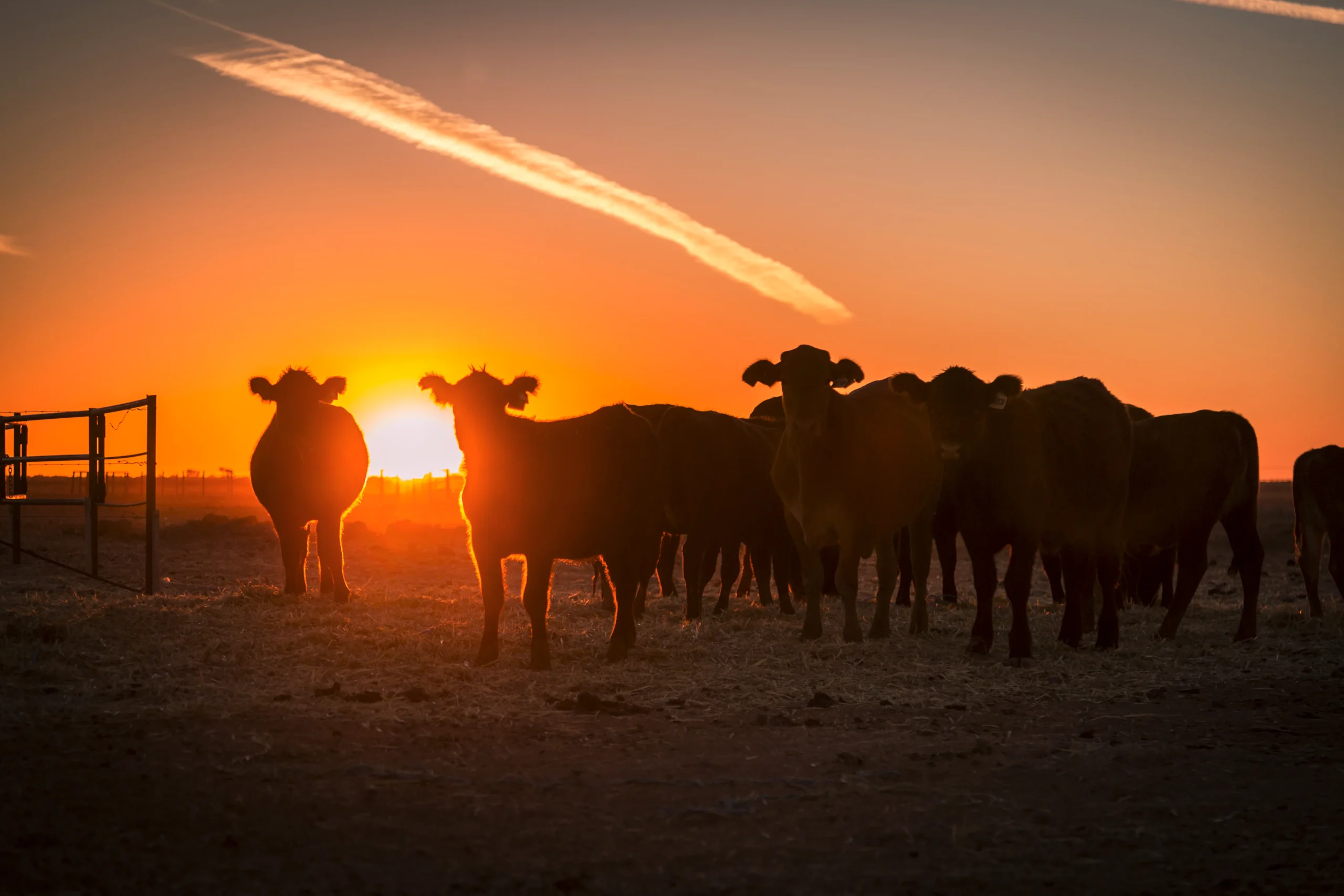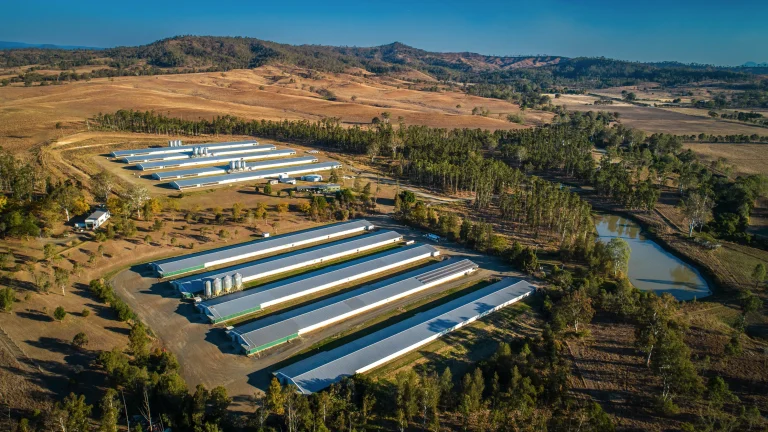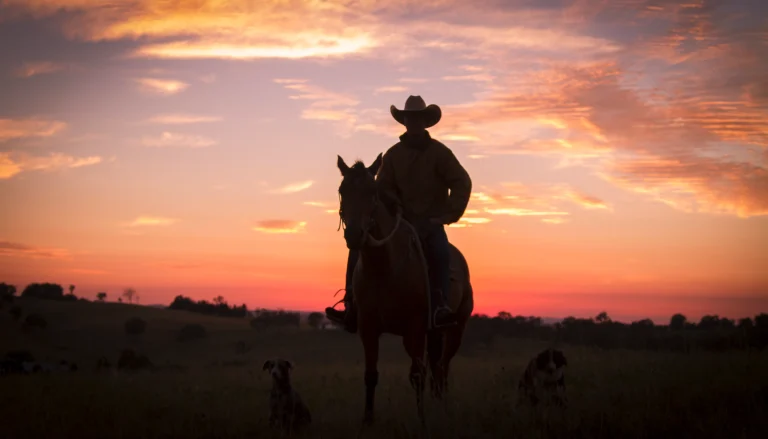Essential Methods for Valuing Farm Infrastructure in Grazing Land Investments
Infrastructure valuation represents one of the most complex and critical components of grazing property assessment, often determining the difference between profitable and marginal pastoral investments. Understanding the methods for valuing farm infrastructure in grazing land investments requires sophisticated analysis of functional utility, replacement costs, operational efficiency, and strategic value that different infrastructure systems contribute to overall property performance.
Australia’s extensive grazing regions encompass diverse infrastructure requirements that reflect varying climatic conditions, production systems, and management intensities across different pastoral zones. From basic stock handling facilities in remote areas to sophisticated automated systems in intensive grazing operations, infrastructure quality and condition significantly influence both operational capability and property values.
Modern grazing enterprises increasingly recognize infrastructure as strategic assets requiring systematic valuation, maintenance planning, and strategic replacement scheduling that affects both immediate operational efficiency and long-term investment returns. At Agribusiness Horizons, we regularly employ proven methods for valuing farm infrastructure in grazing land investments, providing clients with comprehensive assessment frameworks that address both current utility and future development potential.
This comprehensive guide will equip you with essential valuation methodologies, assessment frameworks, condition evaluation techniques, and strategic analysis approaches that enable accurate infrastructure valuation across Australia’s diverse grazing property market.
Australia’s Grazing Infrastructure Landscape and Investment Context
The Australian grazing sector encompasses vast geographical areas with infrastructure requirements that vary dramatically based on climatic conditions, operational intensity, and management systems employed across different pastoral regions. Understanding these regional variations provides essential context for infrastructure valuation approaches.
Extensive pastoral systems in northern Australia typically feature basic but essential infrastructure including stock yards, bore water systems, and minimal fencing designed to support large-scale cattle operations across substantial land areas. Infrastructure density remains relatively low but individual components often represent substantial investments.
Intensive grazing operations in higher rainfall regions demonstrate greater infrastructure complexity including sophisticated water reticulation systems, internal fencing networks, improved stock handling facilities, and feed storage infrastructure that supports higher productivity and operational efficiency.
Infrastructure age and condition vary significantly across Australian grazing properties, with some operations featuring modern, well-maintained systems while others require substantial investment to achieve acceptable operational standards and safety compliance.
Technology integration in grazing infrastructure continues expanding through automated gates, remote monitoring systems, and precision water delivery that enhance operational efficiency while requiring specialized valuation approaches that consider both current utility and future adaptation potential.
Regional development patterns and infrastructure sharing arrangements affect individual property infrastructure requirements and valuation considerations, particularly in areas with established industry cooperation and shared facility utilization.
Replacement Cost Valuation Methodology
Replacement cost analysis forms the foundation for most infrastructure valuation approaches, providing objective assessment of current market costs for equivalent infrastructure systems while considering modern construction standards and regulatory requirements.
Current market pricing for construction materials, labor costs, and equipment installation provides baseline data for replacement cost calculations that reflect contemporary market conditions and construction standards applicable to different grazing regions.
Engineering specifications and design standards for modern grazing infrastructure often differ significantly from older installations, requiring adjustment factors that account for improved functionality, safety compliance, and operational efficiency in replacement cost calculations.
Construction complexity and site-specific factors including terrain challenges, access limitations, and soil conditions significantly influence replacement costs and require detailed assessment of local conditions that affect construction feasibility and expense.
Regulatory compliance requirements for new construction including environmental approvals, safety standards, and planning permissions add substantial costs to replacement scenarios that may not have applied to original infrastructure installation.
Professional installation versus owner-builder approaches create different cost structures that affect replacement cost calculations and require consideration of quality standards and warranty provisions that influence long-term value.
Regional cost variations across Australia’s grazing areas reflect different labor markets, material transport costs, and contractor availability that significantly influence replacement cost estimates for comparable infrastructure systems.
Functional Utility and Economic Value Assessment
Economic value assessment examines the contribution of infrastructure systems to overall grazing operation profitability through operational efficiency, productivity enhancement, and risk mitigation that justify infrastructure investment and maintenance expenditure.
Productivity impact analysis addresses how infrastructure systems affect stocking rates, growth performance, and operational efficiency that translate directly into economic returns for grazing enterprises across different seasonal conditions.
Labor efficiency improvements enabled by well-designed infrastructure systems reduce operational costs while improving safety and animal handling effectiveness that enhances both productivity and workplace satisfaction for grazing operations.
Risk mitigation value encompasses infrastructure contributions to drought management, animal health protection, and operational continuity during adverse conditions that protect revenue streams and asset values.
Operational flexibility provided by infrastructure systems enables management responses to market conditions, seasonal variations, and production opportunities that enhance overall enterprise adaptability and profitability potential.
Quality assurance benefits from proper infrastructure support animal welfare standards, meat quality outcomes, and certification requirements that access premium markets and avoid regulatory penalties.
Strategic positioning advantages from superior infrastructure enable operational expansion, system intensification, and management improvements that support long-term competitive advantages and property value enhancement.
Depreciation and Condition Assessment Frameworks
Systematic condition assessment provides essential foundation for infrastructure valuation by determining remaining useful life, maintenance requirements, and replacement scheduling that affects both current value and future capital obligations.
Physical condition evaluation encompasses structural integrity, functionality assessment, and safety compliance that determine immediate usability and ongoing maintenance requirements for different infrastructure components.
Remaining useful life calculations consider original design life, current condition, maintenance history, and operational intensity to project future service capability and replacement timing for strategic planning purposes.
Maintenance cost projection addresses ongoing repair requirements, preventive maintenance programs, and component replacement schedules that affect total cost of ownership and net economic value calculations.
Obsolescence assessment examines functional adequacy, technology currency, and regulatory compliance to identify infrastructure that may require early replacement despite acceptable physical condition.
Upgrade potential evaluation considers modification opportunities, expansion capability, and modernization requirements that affect strategic value and future development planning for grazing operations.
Professional inspection methodologies employ qualified assessors, standardized evaluation criteria, and comprehensive documentation to ensure accurate condition assessment and reliable valuation outcomes.
Infrastructure Category Analysis and Specialized Valuation Approaches
Different infrastructure categories require specialized valuation approaches that address their unique characteristics, operational contributions, and replacement considerations within comprehensive grazing property assessment frameworks.
Stock handling infrastructure including yards, crushes, and loading facilities requires assessment of design adequacy, throughput capacity, safety compliance, and operational efficiency that determines both current utility and replacement necessity.
Fencing systems evaluation encompasses construction standards, boundary security, internal subdivision capability, and maintenance requirements that affect both property security and operational flexibility for grazing management.
Water infrastructure assessment addresses bore performance, storage capacity, distribution systems, and water quality that determine operational security and expansion potential for grazing enterprises across different climatic conditions.
Building infrastructure including machinery storage, staff accommodation, and feed storage requires evaluation of structural condition, functional adequacy, and compliance standards that affect operational capability and workplace safety.
Road and access infrastructure assessment examines surface condition, drainage adequacy, and load capacity that determines operational efficiency and property accessibility during different seasonal conditions.
Power and communication systems evaluation addresses electrical safety, capacity adequacy, and connectivity requirements that support modern grazing operations and technology integration opportunities.
Regional Variations and Market Influences
Geographic location and regional characteristics significantly influence infrastructure valuation through varying construction costs, climate requirements, and operational standards that reflect local conditions and market expectations.
Northern Australia’s challenging climate conditions require specialized infrastructure design and materials that withstand extreme weather, temperature variations, and seasonal flooding that affect both construction costs and maintenance requirements.
Coastal grazing regions face additional infrastructure challenges from salt exposure, humidity effects, and cyclone risks that require enhanced construction standards and specialized materials that increase both installation and maintenance costs.
Inland pastoral areas often contend with remoteness factors that affect construction costs, maintenance access, and component availability while requiring infrastructure systems capable of autonomous operation during extended periods.
High rainfall grazing regions support more intensive infrastructure development including sophisticated drainage systems, improved access roads, and enhanced facility standards that reflect higher productivity potential and operational intensity.
Market expectations and buyer preferences vary significantly between different grazing regions, with some areas demanding modern infrastructure standards while others accept more basic systems that reflect local operational norms.
Property scale and operational intensity affect infrastructure requirements and valuation approaches, with larger operations often achieving better infrastructure utilization and economies of scale compared to smaller grazing enterprises.
Technology Integration and Modern Infrastructure Valuation
Contemporary grazing infrastructure increasingly incorporates technology components that require specialized valuation approaches addressing both current functionality and future adaptation potential within evolving pastoral management systems.
Automated systems including remote-controlled gates, automatic stock feeders, and monitoring equipment provide operational efficiency but require assessment of technology currency, maintenance complexity, and upgrade potential.
Solar power systems and renewable energy infrastructure contribute to operational cost reduction and environmental sustainability while requiring evaluation of performance capacity, maintenance requirements, and technological obsolescence.
Communication and connectivity infrastructure supports modern management systems and remote monitoring capabilities that enhance operational efficiency and property management capability during extended absence periods.
Data collection and monitoring systems including weather stations, soil moisture sensors, and stock monitoring equipment provide valuable management information while requiring assessment of system integration and data utility.
GPS and mapping technology integration supports precision management approaches and operational planning that enhances efficiency while requiring evaluation of system compatibility and upgrade potential.
Water monitoring and control systems enable precise resource management and conservation that supports both operational efficiency and regulatory compliance while requiring assessment of system reliability and maintenance requirements.
Comparative Analysis of Infrastructure Valuation Methods
| Valuation Method | Accuracy Level | Data Requirements | Application Scope | Professional Expertise Required |
|---|---|---|---|---|
| Replacement Cost | High | Moderate | Universal | Construction/Engineering |
| Economic Value | Moderate | High | Income-Producing Assets | Agricultural/Financial |
| Market Comparison | Variable | High | Established Markets | Real Estate/Appraisal |
| Depreciated Cost | High | Low | Standard Infrastructure | General Assessment |
| Functional Analysis | High | Very High | Specialized Systems | Technical/Operational |
This analysis demonstrates how different valuation approaches provide varying levels of accuracy and require different expertise and data requirements. Methods for valuing farm infrastructure in grazing land investments often employ multiple approaches to ensure comprehensive assessment and validation of infrastructure values.
Replacement cost methods typically provide the most reliable baseline for standard infrastructure, while economic value assessment better captures the strategic worth of specialized or high-performing systems.
Agribusiness Horizons’ Infrastructure Valuation Services
Our comprehensive approach to grazing infrastructure valuation combines technical expertise, market knowledge, and strategic analysis to provide clients with accurate assessments that support informed investment decisions and property management planning.
Technical assessment services coordinate qualified engineers, construction specialists, and agricultural consultants to evaluate infrastructure condition, functionality, and compliance status across all major system categories found in grazing operations.
Market analysis and cost benchmarking services provide current replacement cost data, regional pricing variations, and construction standard requirements that ensure accurate valuation outcomes based on contemporary market conditions.
Economic impact assessment evaluates the contribution of infrastructure systems to overall property productivity, operational efficiency, and strategic value that determines infrastructure worth beyond simple replacement cost calculations.
Condition reporting and maintenance planning services provide detailed documentation of current infrastructure status and projected maintenance requirements that support both valuation accuracy and future capital planning.
Strategic development assessment examines infrastructure adequacy for current operations and potential expansion opportunities while identifying upgrade priorities that enhance both operational capability and property value.
Our expertise in methods for valuing farm infrastructure in grazing land investments enables clients to make informed decisions about property acquisitions, capital allocation priorities, and strategic development planning based on comprehensive infrastructure analysis.
Strategic Infrastructure Planning and Investment Optimization
Effective infrastructure valuation supports strategic planning approaches that optimize capital allocation, maintenance scheduling, and development priorities to maximize both operational efficiency and long-term property value enhancement.
Capital allocation planning coordinates infrastructure investment priorities with available resources and expected returns to optimize improvement outcomes while maintaining operational continuity and financial sustainability.
Maintenance scheduling and lifecycle management balance ongoing repair requirements with replacement planning to minimize total cost of ownership while maintaining acceptable operational standards and safety compliance.
Technology upgrade planning addresses modernization opportunities and integration potential that enhance operational efficiency while considering compatibility requirements and training obligations for successful implementation.
Expansion planning and development sequencing coordinate infrastructure improvements with operational growth objectives to ensure adequate support capability while avoiding over-investment in unnecessary capacity.
Risk management and contingency planning address infrastructure vulnerability and backup systems that protect operational continuity during equipment failure or adverse conditions that could disrupt grazing operations.
Professional consultation and implementation support ensures infrastructure projects achieve intended outcomes while maintaining quality standards and regulatory compliance throughout planning and construction phases.
Future Trends and Infrastructure Evolution
Emerging trends in grazing infrastructure continue reshaping valuation considerations through technological advancement, environmental requirements, and operational efficiency improvements that affect both current assessment and future planning.
Automation and robotics integration provides enhanced operational efficiency and labor cost reduction while requiring specialized valuation approaches that consider technology currency and adaptation potential within evolving management systems.
Environmental monitoring and compliance systems address regulatory requirements and sustainability objectives while providing operational benefits that enhance both legal compliance and market positioning for progressive grazing operations.
Renewable energy adoption and energy independence reduce operational costs while supporting environmental objectives and providing marketing advantages for sustainability-focused grazing enterprises seeking premium market access.
Precision agriculture technologies enable enhanced resource management and operational optimization while requiring assessment of system integration potential and compatibility with existing infrastructure investments.
Climate adaptation infrastructure addresses changing weather patterns and extreme event frequency through enhanced resilience and adaptive capability that protects operational continuity and asset values.
Communication and connectivity improvements support remote management capability and operational coordination while enabling access to expert consultation and market information that enhances decision-making capability.
Conclusion and Implementation Strategy
Successfully implementing methods for valuing farm infrastructure in grazing land investments requires systematic assessment approaches that address technical condition, economic contribution, and strategic value within comprehensive property evaluation frameworks. Professional infrastructure valuation provides essential foundation for investment decisions and capital planning.
Infrastructure represents substantial capital investments that require ongoing management attention and strategic planning to maintain operational effectiveness and protect asset values throughout extended ownership periods and changing operational requirements.
Consider these strategic questions as you evaluate grazing infrastructure investments: How might technological advancement and automation affect the functional obsolescence and replacement requirements for different infrastructure categories over the next decade? What infrastructure improvements could provide the greatest operational efficiency gains and strategic advantages for your specific grazing system and regional conditions? How can infrastructure valuation integrate with succession planning and family wealth management to optimize long-term outcomes?
These considerations highlight the importance of professional infrastructure assessment and strategic planning for successful grazing property investment and management decisions. Specialized expertise provides essential support for optimizing infrastructure investments while protecting operational capability and property values.
Contact Agribusiness Horizons today to discuss your grazing property investment objectives and learn how our specialized infrastructure valuation services can support your property assessment and strategic planning initiatives. Our expertise in grazing infrastructure analysis, technical evaluation, and strategic advisory provides the foundation for confident decision-making in Australia’s dynamic pastoral property market.



